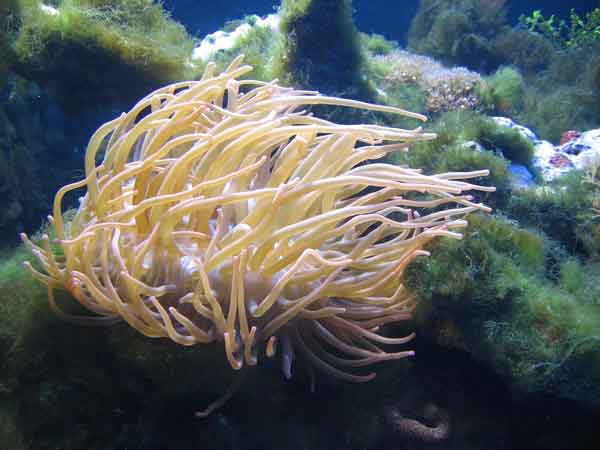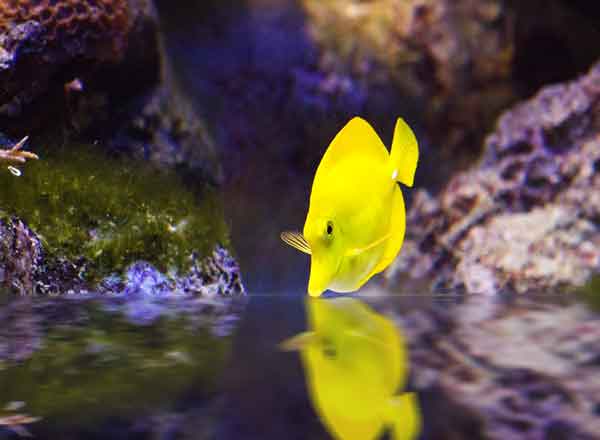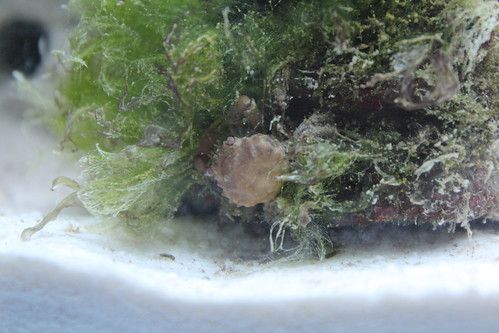[ad_1]
If you’re having problems with green hair algae–you’re not alone. Many of us have struggled with this problem algae in our tanks. It can be a big pain because it can “take over your tank” in a short amount of time. So let’s dive a bit deeper into what causes the problem and how to get rid of green hair algae.
The first thing I want you to do–is to get ready to get frustrated. If you have significant algae growth, this is going to be a pain. I’m sorry for you, in advance. But I don’t want to sugar coat it. To properly fight green hair algae, you need to fight the war on two fronts–you need to remove the algae itself and find the underlying cause of the problem.

Green hair algae can be quite problematic when it reaches this level of tank domination
The solution, very likely, won’t be a product you can buy on the shelf of your local fish store, add to the tank, and be on your way. It is very likely that ‘the problem’ isn’t being caused by a single thing. Algae are naturally occurring and, as you can tell by your own experience, they thrive in the home aquarium setting. But those problems generally don’t arise overnight–they are generally the net result of an accumulation of factors that are favorable for the algae that tip the balance towards them–and over time, they can become the dominant species in your tank.
In order to fight this problem and regain control of your tank, your goal is to remove as many of those variables that favor the green hair algae and beat them at their own game (survival and successful growth) tipping the balance back in favor of your more desirable coral species.
Step 1: Physical removal
The first and most important step is that you will literally want to rip the green hair algae off the rocks and out of your tank. Turn off the pumps (you don’t want to blow filaments around, that will just send them to the far reaches of your tank to grow again), put on a glove, channel your best inner marine iguana spirit (they love eating algae off of rocks in the ocean), get your hand in there and start pulling. You’ll want a slop container with some water in it to collect this mess.
I don’t actually recommend you remove it by mouth. The technique is more like this, literally and emotionally:
via GIPHY
The goal here is eradication, so you want to have an eye for perfection and be persistent. Keep up with the grooming over a few days, if necessary–don’t let up.
Step 2: Turn green hair algae into food
If your local fish store doesn’t have a nice selection of marine iguanas (that was a joke), another option to help get the green hair algae under control is to add some livestock that will eat it. Emerald crabs, Yellow tangs, and lawnmower blennies are two animals with a taste for green hair algae. They can help, they are natural, but they probably won’t be enough to get your problem under control.

Adding an herbivorous fish like a yellow tang can help put pressure on natural green hair algae populations
Looking for other great saltwater fish that eat algae? Check out this article here.
Step 3: Treat the underlying issue
At the risk of oversimplifying here, green hair algae need three things to become a pain in your tank
- Nutrients
- Lights
- Low/moderate water flow
If green hair algae are a new or recent problem in your tank, chances are that something has changed in one of those three categories to make growing in your tank more favorable than it was just a few weeks before.
Nutrients
Nitrates, silicates, and phosphates in your aquarium water can serve as fertilizer, boosting the growth of problem algae like green hair algae. Testing your aquarium water for these pollutants can help you triangulate the problem. In addition to testing your aquarium water, test your source water as well (the water coming out of the tap and the water coming out of your RO/DI unit, if you use one.
Take measures to remove the pollutants with water changes (if nitrates) and media like GFO if phosphates. You can also add macroalgae to a reactor or a sump/refugium to try and outcompete with the green hair algae for nutrients.
Try to figure out what’s causing the spike in nutrients–does your RO/DI need to be replaced? Is your protein skimmer clean and working hard for you? Are you over-feeding your tank? Can you cut back on food waste? It’s probably a good practice to scale back your feeding while fighting this pest, just for good measure.
In summary, what you want to do here is get your water parameters within the ideal range, remove the problem, and keep the water within that range.

Emerald crabs like to dine on green hair algae
The spectrum of your lights
How long have you had your current aquarium lights? Over time, the spectrum of light that a bulb emits can drift and become more favorable to growing algae. If you have an LED lighting system, changing the mix of blue/white can also have an impact. If you’re having problems with green hair algae, replace the bulbs (if you’re dealing with fluorescents or metal halides) or shift the spectrum of your LEDs towards blue by increasing the blue output and decreasing white. In extreme cases, it may even be worth shutting your lights off totally for a day or two while you physically remove
Water flow
Clean your powerheads/pumps to ensure you’re getting a vigorous flow in your tank. Check to make sure they haven’t moved or recently created dead spots. Consider adding another pump to increase water flow and pressure on the algae.
Conclusion
Now that you know how to get rid of green hair algae, I hope you don’t want to pull your own hair out. Don’t get too frustrated and lose hope. It’s a battle, but a battle you will win and be persistent.
If you’ve ever battled with green hair algae, please leave a comment here to let us know how you got rid of it. Thanks.
Shopping
Pick up some extra GFO or bio pellets media here.
For more information about aquarium pests
Check out these other articles about dealing with aquarium pests:
23 Quick tips for controlling aquarium algae
Bristle worms
Aiptasia anemone
Go deeper on green hair algae
If you want to dive deeper on this topic, check out this video here:
[ad_2]
Source link
